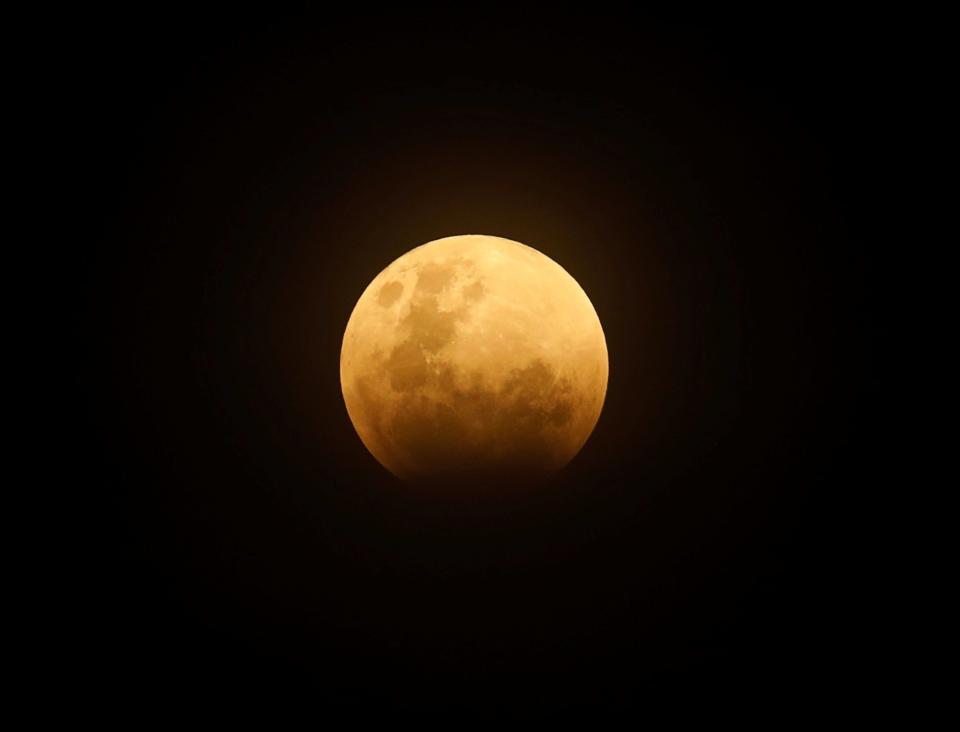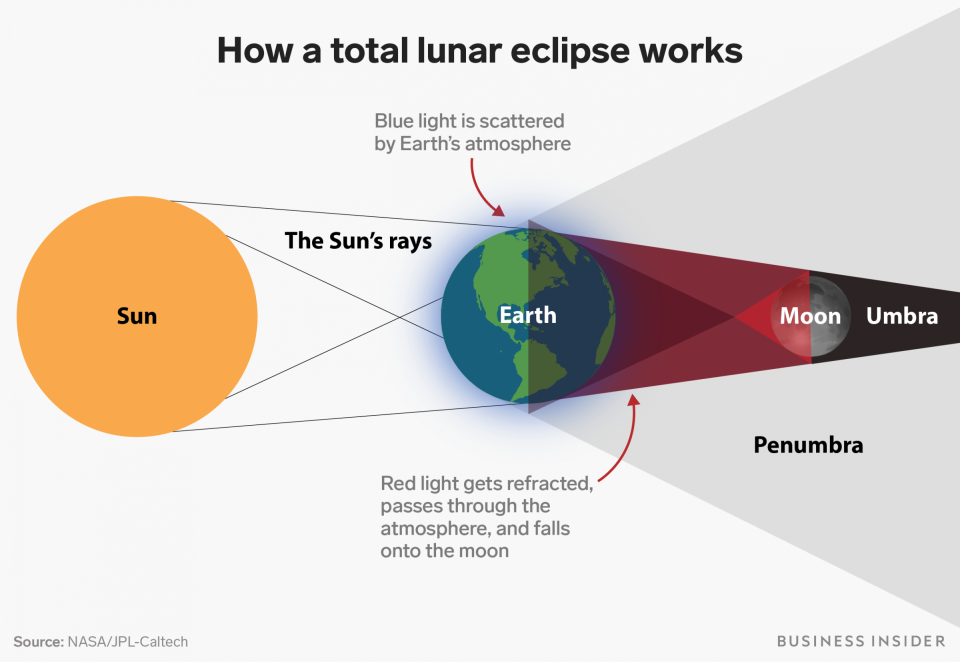A glowing red 'blood moon' this week will be the longest lunar eclipse in a century — here's how to see it

REUTERS/Darren Whiteside
A blood moon — and the longest lunar eclipse of the 21st century — will occur on the night of July 27 and the morning of July 28.
The total eclipse is set to last for 1 hour and 43 minutes.
The eclipse will only be visible in the Eastern Hemisphere.
July is shaping up to be an excellent month for astronomy fans.
On the night of July 27 and the early morning hours of July 28, sky-watchers in the Eastern Hemisphere will be treated to the longest lunar eclipse set to occur in the 21st century.
Astronomers expect the total eclipse to last for an hour and 43 minutes, with the partial eclipse — which occurs before and after the total eclipse phase — lasting 3 hours and 55 minutes.
A lunar eclipse occurs when the sun, Earth, and moon are directly aligned, and the moon's orbit brings it directly into Earth's shadow. During the eclipse, the moon will pass through the darkest region of Earth's shadow, known as the umbra, which will give the moon a reddish "blood moon" sheen.

Shayanne Gal/Business Insider
July's full moon will happen at the same time as the moon's apogee — which is when the moon hits its furthest point from Earth in its monthly orbit. It'll be the smallest and farthest full moon of the year, which means the moon will take more time to pass through Earth's dark shadow, making the eclipse last longer.
The longest possible lunar eclipse is 1 hour and 47 minutes, according to EarthSky.
The total eclipse will begin at 7:30 p.m. UTC, and end at 9:13 p.m. UTC. The peak of the eclipse will occur at 8:22 p.m. UTC.
Just a few days after the lunar eclipse, Mars will reach its closest point to Earth since 2003. On July 31, the red planet will be only 35.8 million miles away from Earth, making it clearly visible to the naked eye.
Stargazers in India, China, parts of Russia, Southeast Asia, Egypt, and across Africa will easily be able to see both Mars and the blood moon on July 27 and 28.
NOW WATCH: Animated map shows every total solar eclipse around the world until 2040
See Also:

 Yahoo News
Yahoo News 
